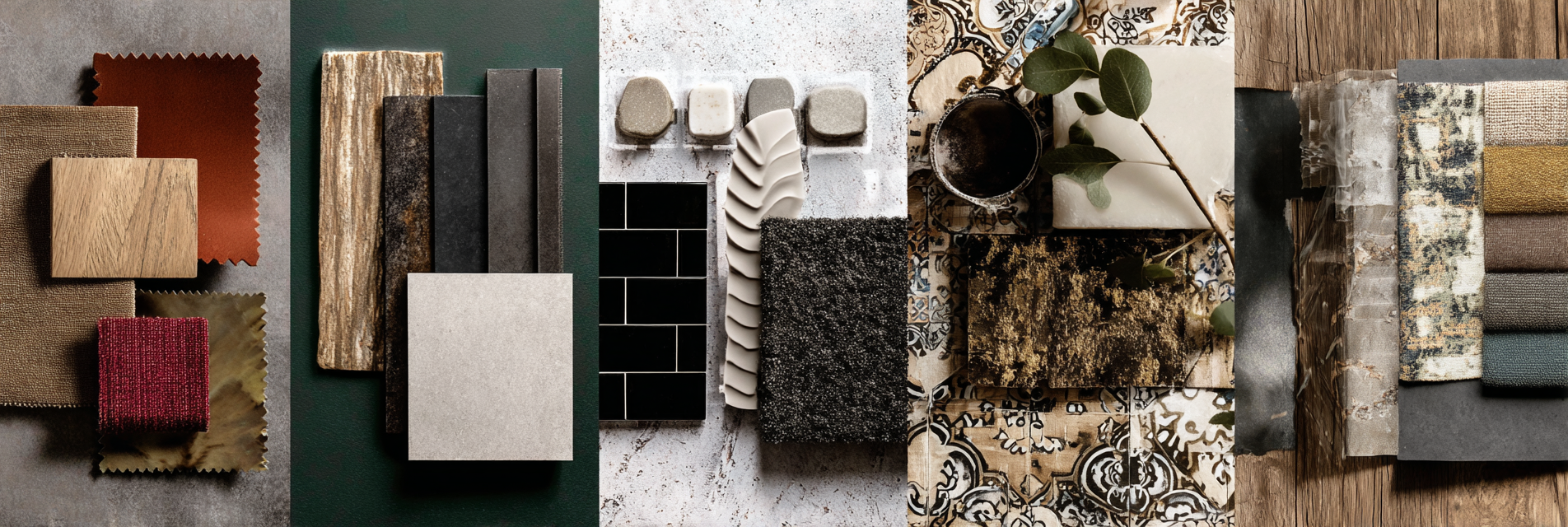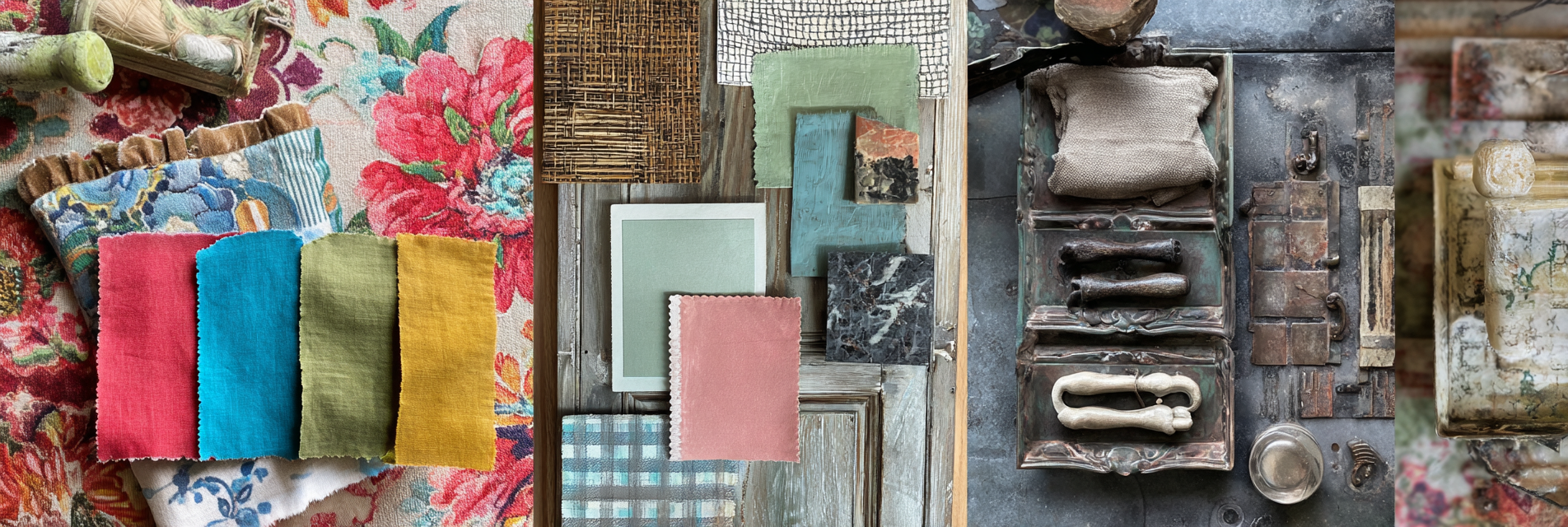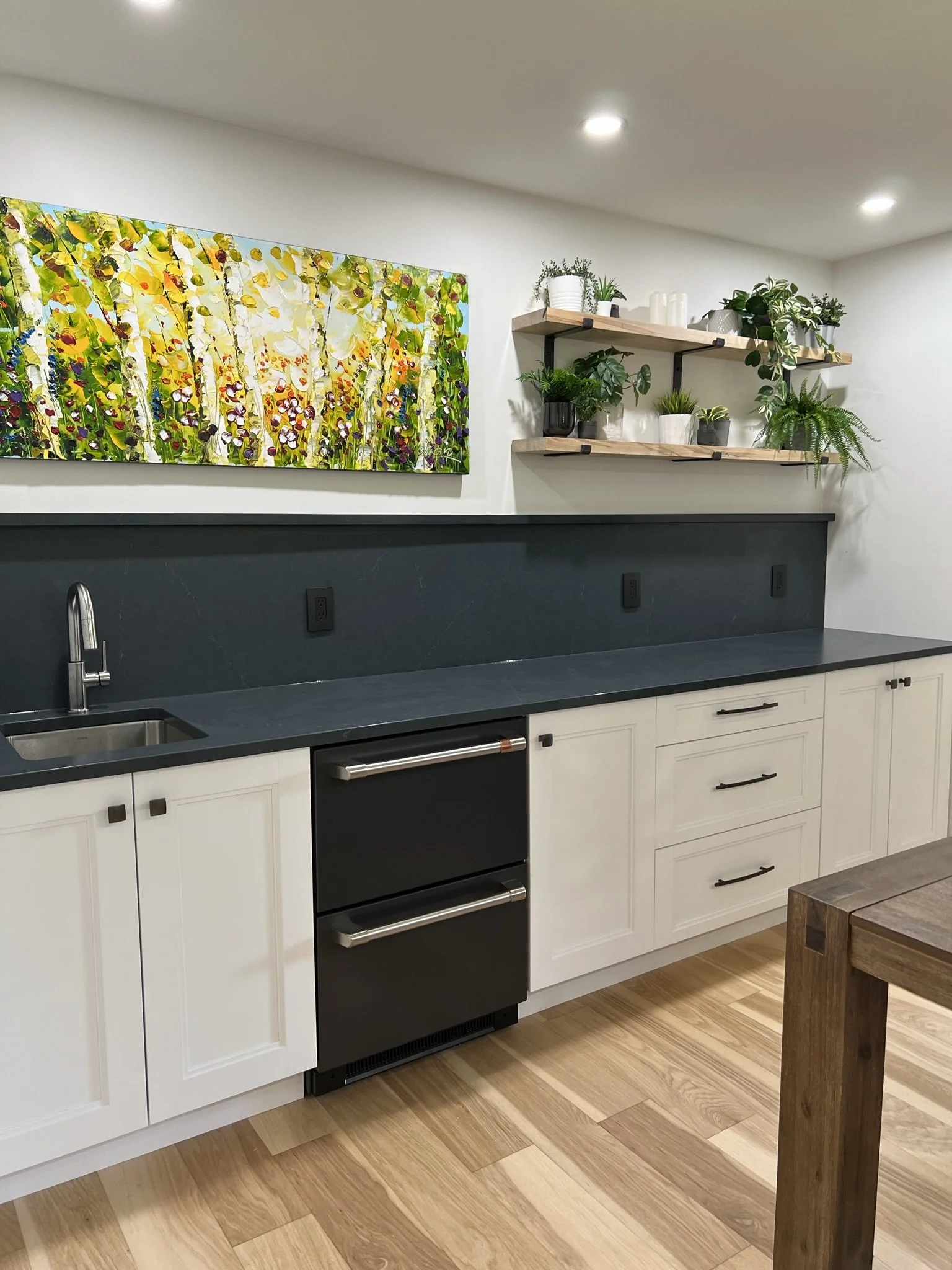What 20 Years in Fast-Paced Manufacturing Taught Me About Designing a Cohesive Home
Spoiler: You can’t just pin your way there. I tried. It got weird.
Whether you’re designing one room or building an entire home, keeping everything feeling cohesive is one of the hardest parts. As someone who spent two decades managing fast-paced product development, I’ve seen firsthand what happens when decisions aren’t aligned — and how the right systems can make all the difference. This post breaks down what I learned in manufacturing and how it shapes my approach to home design, room flow, and finish planning.
I’ll admit it — I don’t really need moodboards. I can assemble an entire space in my head and see how it will come together. (Chris finds this equal parts impressive and annoying — he’s more of a “visual learner.” I'm more, you know, I see dead people… except it’s tile, lighting, and cabinet pulls floating in my mind.)
But here’s the thing: moodboards aren’t about me — they’re about helping clients make faster, better decisions.
And as someone who’s spent 20 years making fast, critical decisions in the medical device manufacturing world (where lives are literally on the line if you hesitate), I know the value of a good process.
In manufacturing, you can’t afford to waffle — if your subprocesses don’t fit together, everything explodes. The same is true in home design: you can’t have a tile that clashes with your cabinets or a shower that looks like it belongs on another planet. Every element needs to work together seamlessly.
Why Pinterest Won’t Save You
Have I walked into a selections appointment thinking “I’ve got this” — only to toss the whole plan when I spotted a tile I couldn’t live without? 1000%.
Did I care? Not one bit. I built the rest of the selections around her beauty. (We’re talking about the tile here, obviously.)
But here’s why Pinterest alone isn’t enough:
✓ Too many ideas → Analysis paralysis
✓ Contradictory advice → Who do you trust?
✓ 65 saved kitchen styles → Zero actual decisions
Also: have I ever pinned the SAME photo four times and only noticed later? Of course I have. You know what? That’s actually a good thing — it tells you what you really love. If multiple versions of you on different days are drawn to the same thing, maybe that’s the direction to trust.
When you realize you’ve pinned the same kitchen four times… maybe that’s your style. Literally pinned this image 6 times in my “Kitchen” board.
Why Moodboards Actually Work (Engineer Brain FTW)
Moodboards force decisions. You see everything together, and if something feels off? It is off. Fix it now, not after you’ve signed off on $20K in tile.
Clients get stuck without them because they have ideas — but they’ve never seen those ideas coexist. Without a plan, a Design Centre appointment becomes an overwhelming browse-fest.
Multiple moodboards across spaces? Now you can step back and ask:
→ Does this feel like one cohesive home?
→ Or like five different people decorated five different rooms?
If the moodboards can live happily under one roof, you’re on the right track. If not… well, one of them probably leaves dishes in the sink.
And even though I could totally wing it? Focus. Moodboards keep my eye on the prize and help my clients do the same — no room for whim decisions.
Can all of your moodboards live happily under one roof? If not… one of them needs to go.
These are all a bit different but would still flow nicely from room to room.
These feel like they are from different planets.
Confessions + Mistakes
Would I do my first home differently? In a heartbeat. No plan. No focus. I got lucky in the end — but luck isn’t a great design strategy.
Pinterest traps? Oh, probably the same as everyone — thinking the latest “must-have” trend will stand the test of time. Newsflash: it usually doesn’t.
And have I ever tried to convince myself two things I loved would work together — when they really didn’t? Of course. Sometimes, even an engineer brain gets it wrong. You have to know when to let go — or find another room where it does work.
Sometimes you love two things…like country kitchens and industrial, exposed HVAC. They don’t need love each other back. In fact, it’s better if they don’t. They’ll find other partners.
Bringing It Full Circle — My Process
When I work with clients, I don’t let them treat moodboards like a Pinterest dump.
We strip out the noise. We hone in on what they truly love. We build around key anchor pieces.
This ties directly into my Selections Made Simple process — it’s the foundation that prevents decision overwhelm and keeps us on track when the Design Centre starts throwing curveballs.
And why is this process something I can offer better than most? Because I’ve spent 20 years making high-stakes, fast-paced decisions in a world where there’s no time to look back — and no margin for error.
Designing a home isn’t life or death — but it IS a huge investment. And I’ll help you make choices you’ll love to live with every single day.
The goal: decisions you love, a home that feels cohesive, and zero decision regret.
If You Were My Client
If we were having coffee and you asked why we start with a moodboard, I’d say:
“Because without it, you’ll walk into your selections appointment like a deer in headlights. With it? You’ll walk in like you OWN the place. You’ll know what to say yes to, what to say no to, and you’ll come out with a home that actually feels like YOU — not a random Pinterest mashup.”
If I were explaining this to a fellow engineer?
→ “You wouldn’t run a production line without process control. A moodboard is process control for your home.”
If I were explaining it to a cat?
→ “You wouldn’t mix tuna with chicken. Some things just don’t go together. Moodboards keep the flavors right.”
Once we’ve built a strong moodboard, we turn it into a selections plan that will take you through your design decision appointment with confidence: Click Here for More Details.
Ready to stop pinning and start planning?
My Selections Made Simple guide starts with laser-focused moodboarding to set the tone for your entire build — so you can walk into your appointment with clarity, confidence, and a plan.






